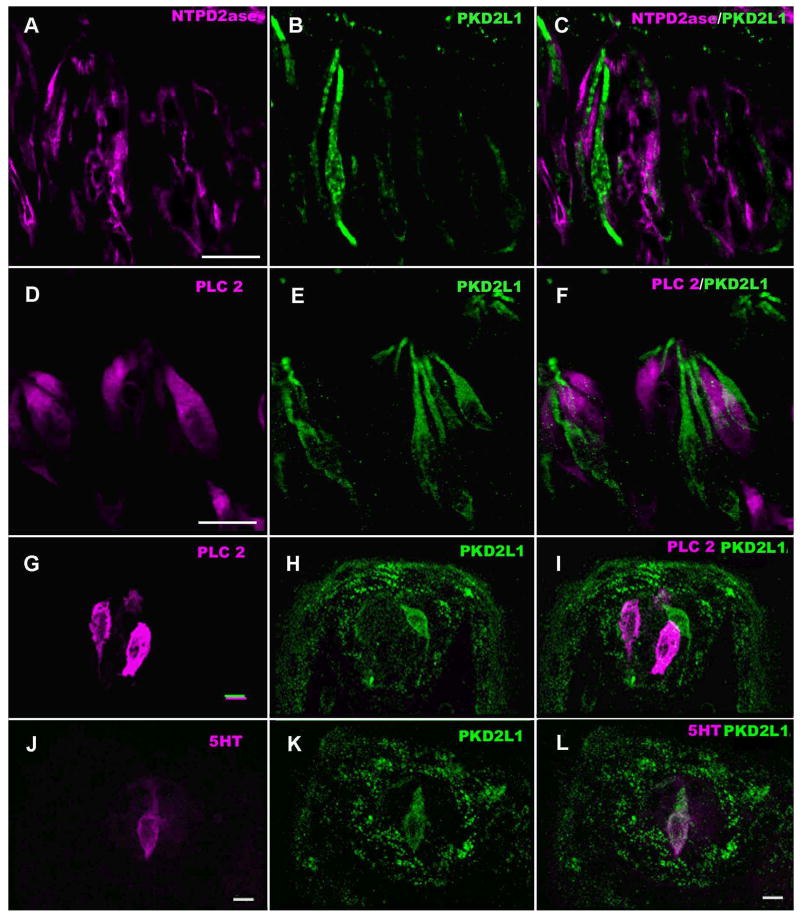Figure 1.
LSCM images of double-labeled longitudinal sections of (A-F) circumvallate taste buds stained for markers of Type I (NTPDase2) and Type II (PLCβ2) taste cells and similar images of (G-L) fungiform taste buds showing Type II (PLCβ2) and Type III (5-HT) cells. A-C: Immunofluorescence of NTPDase2 (magenta), PKD2L1 (green) and their overlay. Taste cells positive for NTPDase2 do not show PKD2L1-IR. D-F: PLCβ2-IR (magenta) and PKD2L1-IR (green) taste cells in two taste buds. The PLCβ2-IR cells are different from PKD2L1-IR cells which tend to be more slender than the PLCβ2-IR cells. G-I: Taste bud in a fungiform papillae showing lack of co-localization of PLCβ2 (magenta) and PKD2L1 (green). J-L: Another fungiform taste bud showing double labeling of a taste cell for the Type III marker, 5-HT (magenta) and PKD2L1 (green). Each fungiform taste bud contained only a few cells exhibiting Type III characteristics. Scale bars = 20 μm.

